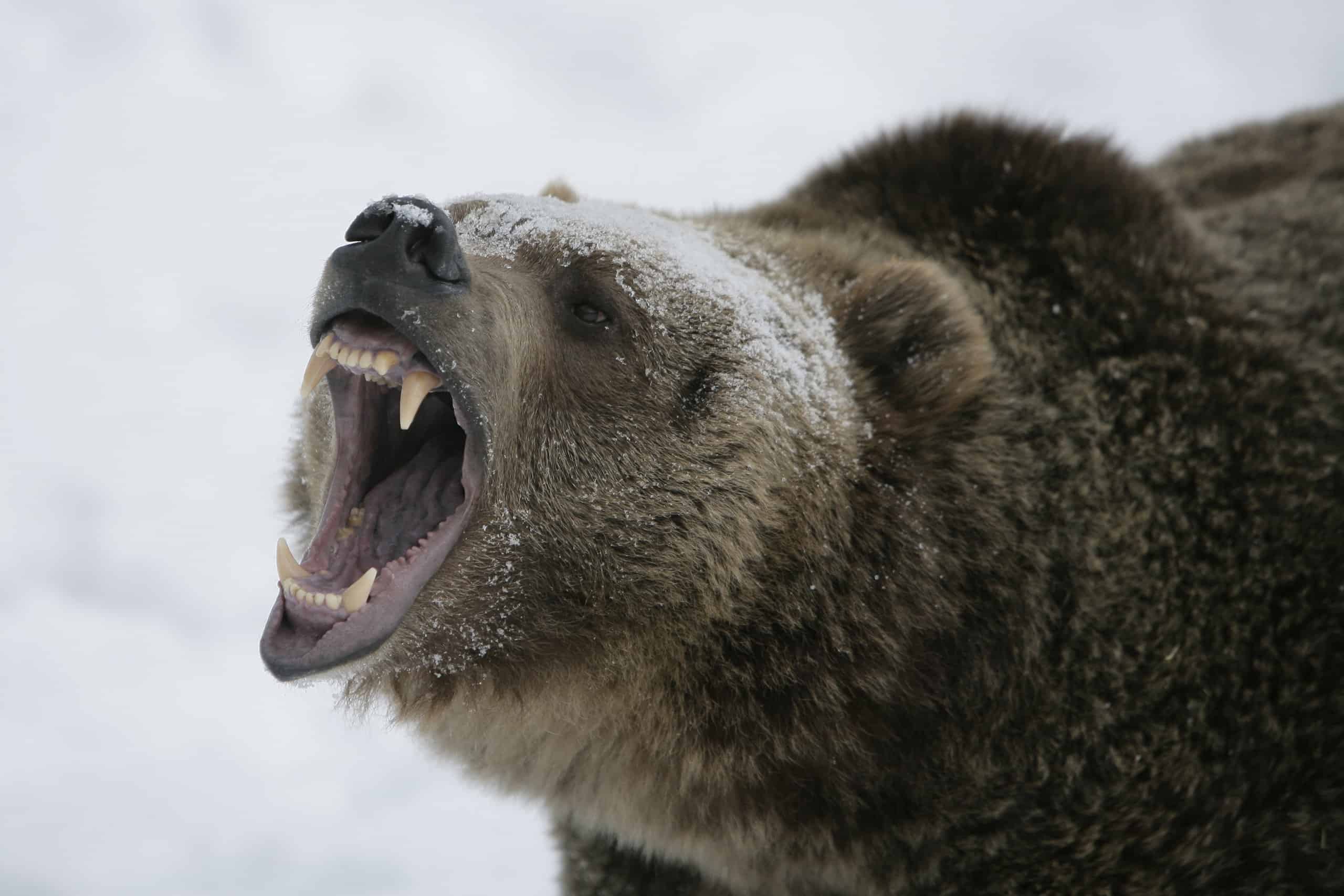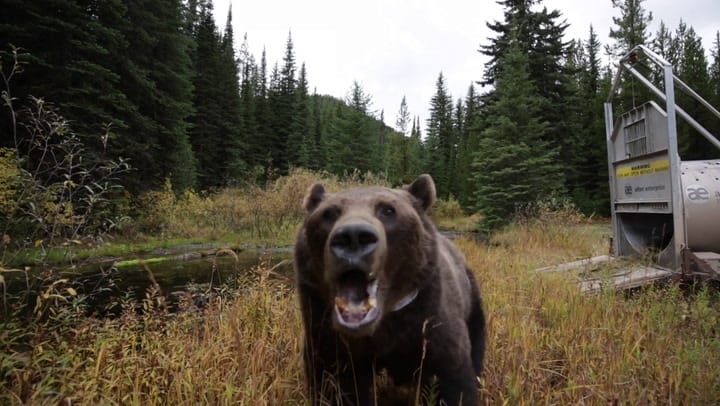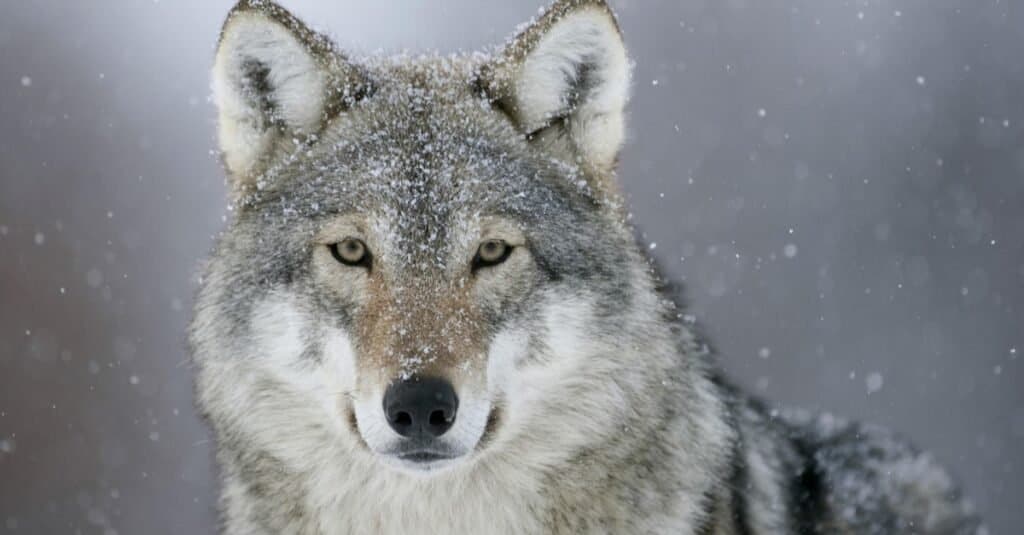Continue reading for our analysis...

On a typical day, most animals are faced with a plethora of challenges that must often be overcome to survive. While there are many challenges, such as facing harsh weather and fighting off predators, finding food is one of the most important.
Because so many animals are pressured to find and save food, it often becomes a resource that must be fought for. What’s more, this means that many animals have to spend time and energy protecting prey that they have already caught. If they aren’t good enough at protecting their kills, they very well could lose them to a sly predator looking for a free meal. This exact scenario takes place in the video below.
The clip begins by showing a massive grizzly bear standing over an elk that it caught. It takes bites from the elk, happy with its decadent dinner. In the foreground, a grey wolf tries to sneak up toward the elk in an attempt to grab some food. Upon seeing this, the bear takes action, taking small lunges at the wolf to scare it away.
This dynamic continues for the next few minutes, with the wolf trying to sneak closer to the elk, while the bear repeatedly scares it away. Even when the wolf seems close enough to take a bite, the bear can scare it away. After a standoff that lasts for a few minutes, the wolf accepts defeat and begins to walk away into the surrounding forest.
Are Grizzly Bears Dangerous?

Despite the grizzly being rather slow and relaxed as shown in the video below, they can be some of the most dangerous animals. Aside from their massive size, these bears have a natural disposition to hunt. Paired with their sharp claws and muscular bodies, it is no wonder why they are so dangerous.
In addition, they also are extremely protective animals. If they perceive any stimuli to be a threat to them or their offspring, they are likely to fight and attack.
Typically, they try to avoid people as much as possible, however, in recent years, they have been making their way closer and closer to human populations. This movement is most likely because human waste, such as garbage cans and landfills offer food sources for bears. In any case, bears that are more accustomed to humans are more likely to be aggressive.
How Hard Can Grizzly Bears Bite?
As you can probably guess, grizzly bears pack a pretty mean bite. On average, their bite can have an average force of around 975 psi. As compared to the vast majority of land animals, this is staggeringly high!
Even though they have a powerful bite, some other predators beat them by leaps and bounds. For instance, polar bears can reach forces of around 1200 psi, while hippos have the strongest bite force of any land animal at around 1800 psi.
Is it Normal Behavior For Grizzly Bears to Fight Wolves?

Conflicts between Grizzly Bears and Wolves are rare.
©nataliatamkovich/Shutterstock.com
Interactions between wolves and grizzly bears are intriguing, rare, and complex in the wild. Typically, when a lone wolf is encountered, a grizzly bear may choose to avoid it or proceed with cautious curiosity.
With their huge size and incredible power, Grizzly bears hold a physical advantage over wolves, while wolves, being swifter and often found in larger packs, possess numerical superiority.
Although these two apex predators occasionally clash, such confrontations are relatively rare in the natural world.
Thank you for reading! Have some feedback for us? Contact the AZ Animals editorial team.







